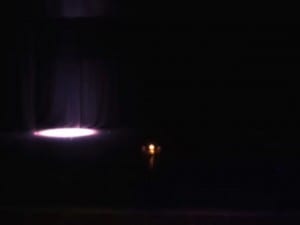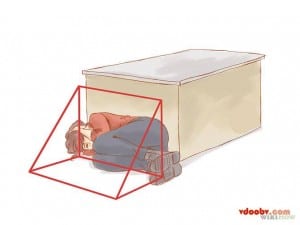 This is mainly describe my work, which includes the whole process and what theories can connect with my work and how can I combine theory with practice step by step and claim about some my ideas and why I do this. Maybe it is long blog for you, but this article is summary the whole process.
This is mainly describe my work, which includes the whole process and what theories can connect with my work and how can I combine theory with practice step by step and claim about some my ideas and why I do this. Maybe it is long blog for you, but this article is summary the whole process.
Background:
At first, I got immature idea about my work. I just want to use own experience to express feelings and emotions, but I found that it lacks of some support ideas and theories. So, I watched the Seven Easy Pieces and Performance Documentation. To tell the truth, when I look this documentation, it is very difficult to understand because I never study this module before coming to UK. As a foreigner, understanding the art behavior is a bit difficult and hard to me, but I am not give it up. I have seen this documentation for many times and associated with my imagination and understanding. Finally, I conquer the gap of art, I can understand what this means. For Seven Easy Pieces and Performance Documentation, it is divided into seven parts, and I am most interested in her fourth works-The Conditioning, first action of Self-portrait(s). In this work, she uses the candle, she laid on a metal cot of sorts, inches above a set of burning candles, for thirty minutes. It seems for me that it is painful and difficult to tolerate physical pain. It seems that people from high power are tortured and oppressed to the common people in the old area, making them suffer from physical torture. Through watching her performance, let me to think about the real meaning of soul. In her works, pain and fear could be understood as the material of the work. The candle light and the performer’s body moved painfully on the scaffold, which reminded me some experiences about myself.
 I experienced the earthquake in 2008 at Wenchuan, where is a city in China. I was covered by the ruins during the earthquake. I was lost sensory in the ruins. when I woke up, I found that I could not see the light and surrounded by dark and I feel my body is particularly heavy. When I couldn’t see the light and I thought I was blind or I could say to go to another world. I tried to breathe slowly and I found that I did not go to another world, I was buried by the ruins. I adjusted my breath, I tried to use my hands to touch my own body from head to leg, I found some stones on my body when I touched my legs, I am very painful. I want to use my hands to push away the stones, but I have no strength. I tried to reach my hands out and hope someone would see my hands to save me, but I cannot do it. I began to feel thirsty and wanted to drink water. I tried to use my hands to support the body, I do not have extra strength, so, it is not success. In this dark, I heard the sound of own heartbeat, as well as the sound of breathing, beautiful memories like movies quickly show in my brain. Suddenly my mind came out, I want to live, I want to go out, I can not be trapped in this, so, I try to slowly change the body’s position. In fact, my experience is similar to the film Aftershock, which reflects the desire to survive and people’s faith and human’s personality. After watching Seven Easy Pieces Documentaion(s), I find that the darkness and pain can use props and physical movements to express it. Therefore, I hope use candles’ light to display it. Mainly because burning light can represent the mental light of faith, it can conquer the mental block and courage own to do it. I create this work mainly because I want to show human’s personality. Simply unravel people’s natural responses after earthquake, i.e. frightening, quivering or puzzled, which are nothing but human nature or animal nature. However, on the process of combining all the pieces together, it is realized that the weak side of human get dwarfed by growing desire to survive, regardless how low the chance seems to be. What inspire the victim to survive is all the past lovely memories, which act as a driving force to overcome the undergoing pain and suffering. Due to these aforementioned reasons, the final focus of this work was shifted to the mental process that how hope lighten up victim’s desire to survive.
I experienced the earthquake in 2008 at Wenchuan, where is a city in China. I was covered by the ruins during the earthquake. I was lost sensory in the ruins. when I woke up, I found that I could not see the light and surrounded by dark and I feel my body is particularly heavy. When I couldn’t see the light and I thought I was blind or I could say to go to another world. I tried to breathe slowly and I found that I did not go to another world, I was buried by the ruins. I adjusted my breath, I tried to use my hands to touch my own body from head to leg, I found some stones on my body when I touched my legs, I am very painful. I want to use my hands to push away the stones, but I have no strength. I tried to reach my hands out and hope someone would see my hands to save me, but I cannot do it. I began to feel thirsty and wanted to drink water. I tried to use my hands to support the body, I do not have extra strength, so, it is not success. In this dark, I heard the sound of own heartbeat, as well as the sound of breathing, beautiful memories like movies quickly show in my brain. Suddenly my mind came out, I want to live, I want to go out, I can not be trapped in this, so, I try to slowly change the body’s position. In fact, my experience is similar to the film Aftershock, which reflects the desire to survive and people’s faith and human’s personality. After watching Seven Easy Pieces Documentaion(s), I find that the darkness and pain can use props and physical movements to express it. Therefore, I hope use candles’ light to display it. Mainly because burning light can represent the mental light of faith, it can conquer the mental block and courage own to do it. I create this work mainly because I want to show human’s personality. Simply unravel people’s natural responses after earthquake, i.e. frightening, quivering or puzzled, which are nothing but human nature or animal nature. However, on the process of combining all the pieces together, it is realized that the weak side of human get dwarfed by growing desire to survive, regardless how low the chance seems to be. What inspire the victim to survive is all the past lovely memories, which act as a driving force to overcome the undergoing pain and suffering. Due to these aforementioned reasons, the final focus of this work was shifted to the mental process that how hope lighten up victim’s desire to survive.
Body: 
Body is the most important parts of my work, and it plays a very significant role in the whole work. “Soma is a Greek word that, from Hesiod onward, has meant:”living body.” This living, self-sensing, internalized perception of oneself is radically different from the externalized perception of what we call a “body,” which could just as well be a human, a statue, a dummy, or a cadaver-from an objective viewpoint, all of these are ‘bodies.’ ”(Thomas, 1998) In my experience, the form of my body is static, and in the work, the physical movements need to switch ways from static to dynamic. So, during this process, I have to think about how the body can move, how can make living body to express the best effects through moving. For example, my living body can keep a posture in a static state. However, in a moving state, my living body can accord to the scene and the physical strength and the structure of my personal body to switch. During this process, my body naturally formed physical movements. Like turning the page of a book. When a person looks to the end of a page, one’s left hand lifts, goes to the right, finds the edge of the next page at the right corner of the book, and turns it to the left. Thus, the touch of the body are closely linked with our sensory and motor nerves.
Thomas talked about it in Somatics: “ The sensory nerves control our perceptions of the world and of ourselves. The motor nerves control our movements in the world and inside ourselves by means of their attachments to the muscles of the skeleton and the smooth muscles of the viscera.”(1998, P6) It also shows that there have two parts to contributes the physical movements, from observation to movements. Observation is accepted by the sensory nerves, when sensory nerve received the signal and then, it sents the signal to the motor nerves, after that, all body can do some movements. In the creation of my work, first step, I observed the geographical location of environment, and then, I connect the location with my body to explore which physical movements can suit it. By way of observation, make the sensory nerve to get this signal and stimulate the motor nerves and finally, the body can get some physical movements.
“ To yourself, you are a soma. To others, you are a body. Only you can perceive yourself as a soma-no one else can do so. But everyone else can see you as a body. Even you can see yourself as a body by looking into a mirror. In the mirror you will see an external, third-person “him” or “her” just like everyone else; but only you have the privileged perception of also seeing ‘me’.” (Thomas,1998) In other words, let the audience see the different changes in the body and these changes can give audiences more thinking and inspiration by inner transmission from sensory to motor. Think and inspiration from audiences also can stimulate performers’ inspiration, which can benefit to refine the work for performer.
Time: Time is also an important parts of the work. Understandings of time- its nature, structure and experience-have varied throughout history; time has never been a shared, continuous or linear notion. As Sylviane Agacinski points out in her wonderful study Time Passing:“Awareness of time is neither pure nor originary, and it cannot be separated from the empirical contents that structure it’(2003:33)” Therefore, in my work, I take into account the whole work of the duration, and some details of the work, I play with the time. For example, at the beginning of my work, I lay quietly on the ground, no any physical action, it can only hear my breathing voice. I use my breath and follow the time, make audiences immersed in the sound and let them to imagination, to consideration. Meanwhile, in my work, I am happy to send out laughter for memory of candles. Which can make audiences focused on my laughter, compare and contrast my work’s emotion and give the audience more imagination. The structure and content of my work and time will not only help me to interpret the work, but also greatly enrich the audience’s imagination and broaden their horizons.

Space: Space is the boundless three-dimensional extent in which objects and events have relative position and direction. In the dance space, it is the characters, props, performing carrier of organic integration, it can vivid create a visual expression effect and bring beautiful taste and artistic feast for the audience through scientific layout and art design of stage space. And the stage space have some features such as variability, artistry and transformation. Firstly, variability. It is difficult to completely copy the scene in real life on the stage because stage space has its own space constraints, but this does not affect the creation of visual effects, because the stage itself has the characteristics of variability. The visual effect of the stage can be achieved by the use of light and shade contrast, color contrast, image structure, or shiny or hazy, immersive. For example, in my work, I use stones to reproduce the scene at that time, the number of stones enlarge the imagination of the stage space. With the wide space stage, the whole space looks very quiet. To some extent, which also stimulates the audience’s imagination and association.
Secondly, artistry. The design of stage space is also a kind of artistic activity, the audience can feel the artistic flavor from the visual expression. Collocation of stage background’s color, the application of 3D technology, the actor, which are created these artistic elements, audiences can enjoy watching the program. And its artistry also reflects in the design of stage space, and every artistic elements likes vitality. I work with props, I will put all the props into a slash, includes stones and candles. Stones are laid on the corner of stage space, candles are laid by the middle of stage space. Actually, the reason why I do this because it can highlight the significance of the candles and make audiences see clearly which are play dominant role in my work.
Thirdly, conversion, although the physical stage space is limited, the artistic creation and space expression is infinite, this infinity is precisely through the transformation of the stage space. On the one hand, stage space have the characteristics of space-time, which means that the daily time and daily space can switch to stage space, use background and actors’ performing to explain virtual and real visual effects. On the other hand, for the person of art design, they also need put mental picture to the stage. As Beethoven said that when he created a music, his brain always have a painting to guide him how can he do. Similarly, for dance, if choreographer want to create a dance work about describe historical events or stories, they will have a plot to guide the choreographer how can they use imagination on the stage and how they connect virtual reality with real space to show it.
In short, the ultimate purpose of the stage space and the visual expression design is serve to the audiences, audiences are judge for visual effects. Therefore, choreographer must considerate the audiences’ requirements from design of the stage layout, the design of screen and visual effetcs.
Interactivity: This word means that the process of two people or things working together and influencing each other. The interaction is also very important to the choreography, choreographer need according to layout of the dance, dance music, stage lighting, dance vocabulary, dance movements and the location of audiences.

As Popat points out: “In interactive artworks the power given to the audience is far greater, and they are made aware of its existence. If the communication between artists(s) and viewers is to be two-way with mutual effect, then the focus of the artwork shifts. Instead of a completed product, the interactive artist designs a framework that contains the potential for the creative experience of the participant. (Popat 2006:34) ”which means that interactive work of the artist is responsible for creating the structure, the framework, the environment within which the participant plays. In the creation of works, it is necessary to combine interactivity.
“There is a need for a philosophical framework that enables us to engage har- moniously with the contextual living space in which we are immersed and from which we are as inseparable as a whirlpool is from a water flow. Reversing the man-induced ebb of essential harmonies may come through a philosophy of “in- clusionality” wherein, as in the wisdom of indigenous traditions, all things are understood to be dynamic contextual inclusions that both include and are in- cluded; i.e. wherein “self’ is to “other” as whirlpool is to riverflow.”(Johannes, 2004)Generally, any philosophical system is constructed by the people and the environment, people are an integral part of the environment, and the environment is also a part of the human being, they are indispensable. For example, riverflow in the big river, which is part of the river, the river can not leave the river flow. Equally, people are whirlpool in the river, and the environment is the river. So, for philosophical problems, not only look at certain things, you can not only see the whirlpool and neglected rivers’ existence. And see the human’s figure but ignore the importance of environment for human being. In my work, I also use this element. If I just put the work in a simple space, and there is no audience, no interaction. It does not have audience give me feedback, and therefore, it can not improve my work. In short, my work is equivalent to “river flow ”, the audience is equivalent to the river, and the “whirlpool” belongs to the rivers, meanwhile, the rivers are also surrounded by “whirlpool”. The key of support work is that it need to rely on the audience’s feedback and opinions, and not simply rely on their own. Therefore, in the work, not only need to consider the meaning of the work, but it also need to take into account the feedback of the audience, which can contribute to the improvement of the work.
 2.
2. 
 4.
4. 














